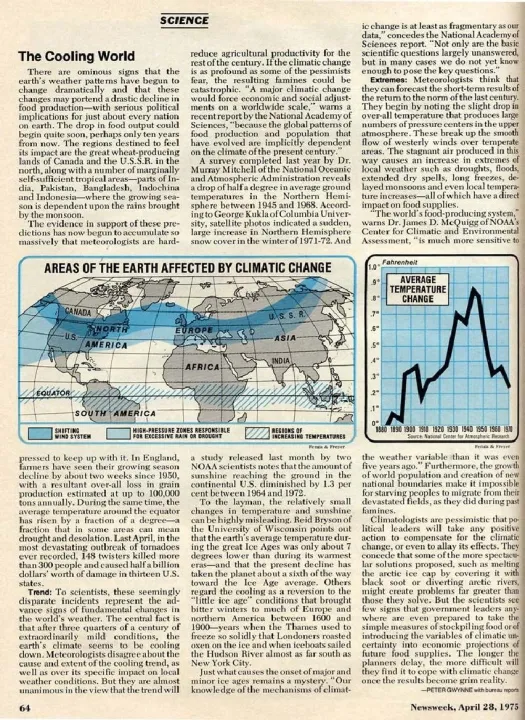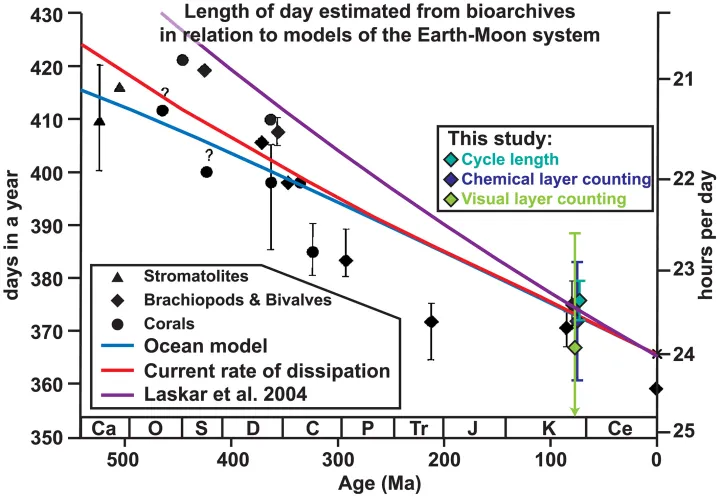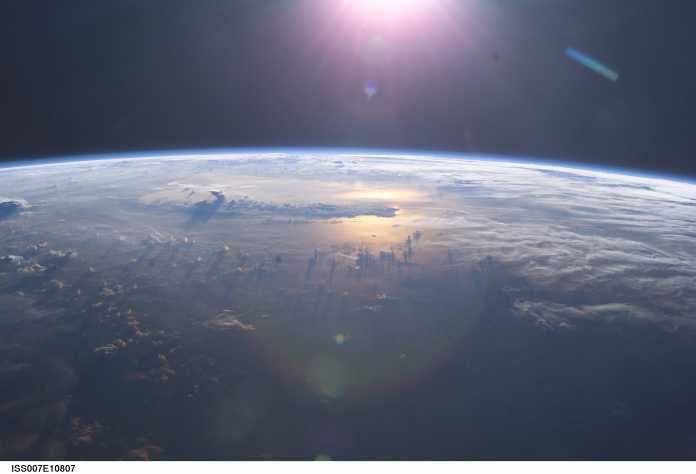Guest Post by David Middleton
*Editors’ Note: This guest post by Geologist David Middleton discusses a recent claim in the media that sea level rise is causing longer days by changing the rate of the planet’s rotation. However, Middleton reveals that there are major problems with the theory, not least of which that this is not a new phenomenon. As Climate Realism has covered dozens of times, models are not proof, and these studies certainly lean on modelling.
‘Unprecedented’ Sea Level Rise Is Making Earth’s Days Longer
Published Jul 15, 2024 at 3:00 PM EDT
Science Reporter
Our changing climate is impacting our planet in a huge number of ways—ranging from powerful hurricanes and intense droughts to invasive species and ocean acidification—but there might be another bizarre effect that you’ve never heard of.
Climate change might actually be slowly changing the length of a day on Earth, according to a new paper in the journal Proceedings of the National Academy of Sciences.
This is a result of sea levels rising—because of increased temperatures and the melting of the polar ice caps—thereby causing a redistribution of mass from the poles of our planet toward the equator.
[…]
Newsweek? They’re still in business?

The PNAS article is pay-walled. However, the abstract says it all…
Abstract
The melting of ice sheets and global glaciers results in sea-level rise, a pole-to-equator mass transport increasing Earth’s oblateness and resulting in an increase in the length of day (LOD). Here, we use observations and reconstructions of mass variations at the Earth’s surface since 1900 to show that the climate-induced LOD trend hovered between 0.3 and 1.0 ms/cy in the 20th century, but has accelerated to 1.33 ± 0.03 ms/cy since 2000. We further show that surface mass transport fully explains the accelerating trend in the Earth oblateness observed in the past three decades. We derive an independent measure of the decreasing LOD trend induced by Glacial Isostatic Adjustment (GIA) of −0.80 ± 0.10 ms/cy, which provides a constraint for the mantle viscosity. The sum of this GIA rate and lunar tidal friction fully explains the secular LOD trend that is inferred from the eclipse record in the past three millennia prior to the onset of contemporary climate change. Projections of future climate warming under high emission scenarios suggest that the climate-induced LOD rate may reach 2.62 ± 0.79 ms/cy by 2100, overtaking lunar tidal friction as the single most important contributor to the long-term LOD variations.
It’s models all the way down. There’s no way to measure fractions of milliseconds per century (ms/cy) changes in the length of day (LOD) over any time period, much less at a centennial to decadal scale. Might as well try to determine “How many angels can dance on the head of a pin?”
The LOD has been generally increasing over geologic time (Mitchell & Kirscher, 2023). As the Earth has pushed the Moon farther away, the Earth’s rotation has slowed down.
1.33 ms/cy = 0.0000133 s/yr
At a rate of 0.0000133 seconds per year, in 80 million years, the sidereal day will be 18 minutes longer than it currently is.
Back in the Cretaceous Period (~80 mya), when sea level was much higher than it is today and there was little to no polar ice, the days were about 23.5 hours long (de Winter et al., 2020). The rate of LOD change from 80 mya to present (1950 AD) was about 2.25 ms/cy.

Allow this to sink in: The rate of LOD change from 80 mya to 1950 AD was about +2.25 ms/cy. The rate of LOD change since 2000 AD, allegedly driven by “‘unprecedented’ sea level rise is only +1.33 ms/cy.
Of course, there are no Cretaceous measurements of LOD. This is based on reconstructions from rudist shells and models… And the error bars are in days and hours… not milliseconds.
Measuring LOD
Current LOD can be directly measured very precisely. Schreiber et al., 2023 employed “a laser ring gyroscope” to measure changes in the sidereal day. They found that the LOD fluctuated by as much as 6 ms over the 120-day measurement period.
If LOD fluctuates by 6 ms over a two month period a 1.33 ± 0.03 ms/century increase in the LOD is about as relevant as a 1-3 mm/yr rate of sea level rise is to a 1 meter daily tidal range.
References:
de Winter, N.J., Goderis, S., Van Malderen, S.J.M., Sinnesael, M., Vansteenberge, S., Snoeck, C., Belza, J., Vanhaecke, F. and Claeys, P. (2020), Subdaily-Scale Chemical Variability in a Torreites Sanchezi Rudist Shell: Implications for Rudist Paleobiology and the Cretaceous Day-Night Cycle. Paleoceanography and Paleoclimatology, 35: e2019PA003723. https://doi.org/10.1029/2019PA003723
Mitchell, R.N., Kirscher, U. Mid-Proterozoic day length stalled by tidal resonance. Nat. Geosci. 16, 567–569 (2023). https://doi.org/10.1038/s41561-023-01202-6
Schreiber, K.U., Kodet, J., Hugentobler, U. et al. Variations in the Earth’s rotation rate measured with a ring laser interferometer. Nat. Photon. 17, 1054–1058 (2023). https://doi.org/10.1038/s41566-023-01286-x
Shahvandi MK, Adhikari S, Dumberry M, Mishra S, Soja B. The increasingly dominant role of climate change on length of day variations. Proc Natl Acad Sci U S A. 2024 Jul 23;121(30):e2406930121. doi: 10.1073/pnas.2406930121. Epub 2024 Jul 15. PMID: 39008671.

















Another false claim to promote doomsday cult of climate extremism! Everyone is so easily convinced of every sensationalist headline that when you actually look at the facts it so inconsequential that it’s not relevant! And then to project this rate of change to the future is not justified at all!
Even if it WAS purely because of ice-caps melting, what do they suppose happened during EVERY INTERGLACIAL that’s ever occurred??? And the Biosphere fared magnificently through it all !!! But now, suddenly, inexplicably, it’s some kind of problem.. as if they have employees passing out from exhaustion now because OMGosh, the day is now soooo loooooong!!!